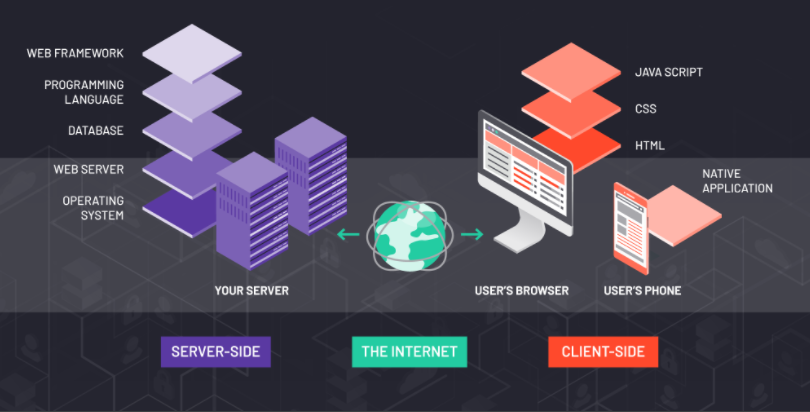A tech stack is the combination of technologies a company uses to build and run an application or project. Sometimes called a “solutions stack,” a tech stack typically consists of programming languages, frameworks, a database, front-end tools, back-end tools, and applications connected via APIs.

Categories of a Tech Stack
Below are some modern categories of a tech sack with their brief review.
- Operating systems and programming language
You’ll choose these based on the environment you’re most comfortable developing in as well as the type of application you want to optimize for. You may end up with several, depending on how you want to build the backend and the user experience, and what devices you’re building for.
- Servers and load balancing
This category includes servers, content distribution networks, routing, and caching services that let your applications send and receive requests, run smoothly, and scale capacity as needed. The larger services, like Amazon’s and Google’s, often offer the same components offered by their smaller counterparts, but they typically allow you to purchase each service as a line item, so you can mix and match based on your product requirements and preferred pricing structure.
- Data storage and querying
This layer of the stack consists of relational and non-relational databases, data warehouses, and data pipelines that allow you to store and query all of your real-time and historical data. These components are key for storing data about what happens inside your app and how users behave when using it. Later you can search this data and use it to improve your product.
- Backend Frameworks
A framework is a collection of languages, libraries, and utilities designed to help developers build applications. Frameworks often include some of the basic functionality you’ll need to build an app, and provides structure for things like organizing and communicating with your database, handling requests from users, and sending out registration or password reset emails. While some choose to forgo frameworks and code everything from scratch, they often end up with a more complicated, time-consuming build.
- Frontend Framework
The services and frameworks you use to build the user experience, including the user interface and all the client-side functionality in your product.
- API services
The applications that help you connect to the tools that make up your extended tech stack. Some API services are simply collections of thousands of pre-built APIs, while others are API gateways that help manage traffic when you need to send and receive large quantities off information from other systems.
- Business intelligence solutions
BI tools bring together data gathered from multiple parts of the company and the market and are designed to help track company performance and make higher-level business decisions. Many offer innovative ways to report on and visualize data.
- Behavioral and product analytics
An emerging but valuable class of tools used to track, store, and analyze user behavior at every stage of the customer journey. Some teams analyze this data in the analytics tools themselves, other teams pipe this data into data warehouses (some teams do both). The best of these tools offer proactive insights and keep data clean and organized.
- Monitoring and performance tools
A category of tools that help you understand how each layer of your tech stack is performing. Monitoring and performance tools collect and analyze data about the technical performance of your software, and are designed to track the health of servers, databases, services, and other internal systems.
Some Platforms with their Tech Stack
Let’s quickly look at some internet platforms and their tech stack.
- Tech stack google
Google Technology Stack – Python, Java, Android SDK, Go, C++, Preact, Angular JS, Kubernetes, TensorFlow and a host of other Google frameworks.
- Netflix tech stack
Netflix tech stack uses GitHub for code collaboration and version control. This ensures that different teams get a hold of their responsibilities of themselves and their work and its impacts on the wider ecosystem. Jenkins is the part of the Netflix stack for ensuring Continuous Integration
- Facebook tech stack
Facebook tech stack includes JavaScript, HTML, CSS, PHP, and ReactJS
- Twitter tech stack
Twitter makes use of Redis and Twemcache at enormous scale